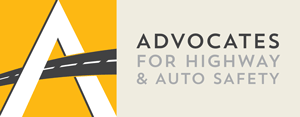Statement of Cathy Chase, President, Advocates for Highway and Auto Safety (Advocates), on Proven Protections for Child Passengers and Road Users
Child Passenger Safety Week 2023 | September 17-23
(Washington, D.C. | September 15, 2023) Children are among our most vulnerable road users. In fact, motor vehicle crashes are a leading cause of death for children ages one to 14 in the U.S. In 2021, 1,184 children (ages 14 and younger) were killed in crashes, a 7.5 percent increase from 2010. This means that every day three children are dying on our roadways, on average–lives lost way too soon and families forever devastated. During this Child Passenger Safety Week (Sept. 17-23), Advocates urges federal and state policy and rule makers to implement available, proven solutions–seat belt use, appropriate child safety seats, occupant detection systems, and other verified safety technologies and infrastructure improvements–to save the lives of children.
Proper Occupant Restraint Use
Parents and caregivers can protect children in vehicles by ensuring they are restrained in a safety seat or seat belt that is appropriate for their age, size and development. When used properly, child safety seats reduce fatal injury by 71 percent for infants and 54 percent for toddlers in passenger cars. Advocates has endorsed the Booster Seat Safety Act, H.R. 607, sponsored by U.S. Reps. Raja Krishnamoorthi (D-IL) and Katie Porter (D-CA), to direct improvements for child passenger safety seat labeling and crash testing, and calls for its enactment without delay.
State Laws to Protect Child Passengers
Advocates rates every state in our annual Roadmap to Safety on the enactment of laws requiring children to be properly restrained in a rear seat through age 12, use a rear-facing safety seat through age two or longer, and use a booster seat through at least age eight and 57 inches in height and until a seat belt fits properly. There is plenty of opportunity for improvements as no state or Washington, D.C. has enacted all of these optimal laws. Yet, there is movement. This year, Delaware and New Hampshire added requirements to keep children in rear-facing safety seats through age two or older, and Delaware extended its booster seat law. States that have not taken action to improve their child passenger safety laws should follow best practices and prioritize their enactment during the next legislative session.
Rear Seat Belt Reminders
Rear seat belt reminders can spur seat belt use and help drivers make sure everyone is buckled up and stays that way throughout their trip. In September 2023, the National Highway Traffic Safety Administration (NHTSA) issued a Notice of Proposed Rulemaking (NPRM) to require passenger vehicles be equipped with seat belt use warning systems for the right front seat passenger and passengers in the rear seats. This is an urgently needed upgrade, and the agency should issue the Final Rule swiftly.
Upgrading School Bus Safety
Riding school buses is a routine event for many children, and bus safety must be improved. According to NHTSA, 1,110 people have died in school transportation-related crashes between 2012 and 2021. Just this month, U.S. Sens. Tammy Duckworth (D-IL) and Sherrod Brown (D-OH) re-introduced the School Bus Safety Act (S-2746), which will advance several vital National Transportation Safety Board (NTSB) recommendations including three-point seat belts for all occupants, automatic emergency braking (AEB), electronic stability control (ESC), and improved fire prevention, among others. Advocates commends the sponsors for their commitment to ensuring school bus trips are safe and calls on Congress to pass this legislation with urgency.
Preventing Hot Car Incidents
Hot cars can quickly turn deadly, especially for small children who cannot exit vehicles on their own. So far in 2023, 26 children have died in hot car incidents, according to Kids and Car Safety. Since 1990, more than 1,050 children perished and thousands have been injured due to pediatric vehicular heatstroke. The provision for technology to prevent these losses, enacted in the Infrastructure Investment and Jobs Act (IIJA, Pub. L. 117-58), must be advanced quickly, and a requirement for effective detection and alert technology for the entire vehicle compartment must be issued. NHTSA missed publishing the NPRM per its self-imposed deadline, and the Congressionally mandated deadline for the Final Rule is fast approaching (November 2023). Children continue to be at risk of death and injury every day while technology is available and affordable, yet not required.
Advancing Overdue Safety Rules to Protect Children
Additional statutorily mandated actions to improve child passenger safety have been languishing at NHTSA; some are as much as seven years overdue. These include enhanced child occupant protection in a crash and improving child Lower Anchors and Tethers for Children (LATCH) restraint systems. Additionally, collapsing seatbacks during crashes also have been the cause of death and injury. The federal safety standard for preventing seatback collapse is insufficient and has not been updated in more than 50 years. This is unacceptable and must be remedied by the U.S. Department of Transportation (U.S. DOT).
Other safety technologies and improved safety standards can protect children and all road users. The U.S. DOT must issue Final Rules for advanced driver assistance systems (ADAS) such as automatic emergency braking (AEB) and other proven technologies. Safety directives in the IIJA and overdue mandated advances must be completed without delay.
Outside the Vehicle
Children are also vulnerable walking, rolling or bicycling. In 2021, of the 7,388 pedestrians killed, 176 were children 14 and younger; and, of the 966 pedalcyclist traffic fatalities, 38 were children. Upgrading roadway safety infrastructure to curb speed and separate road users such as narrowing roads, creating roundabouts, building accessible sidewalks, and assigning protected bike lanes is essential to protecting road users outside of vehicles. Additionally, every year, according to Kids and Car Safety, children are killed or seriously injured because a driver didn’t see them either in front of or behind the vehicle. Often these types of devastating crashes, known as frontovers or backovers, take place when a car is moving in or out of a driveway or parking space. However, they can happen anywhere. Larger passenger vehicles, such as pickup trucks, vans or SUVs, may have front blindzones as long as 16 feet, and as much as 50 feet in the rear, which can obstruct the driver’s view of the child. These larger vehicles account for an estimated 60 percent of backovers.
We urge state and federal leaders to take swift action on these countermeasures to ensure the safety of vulnerable child road users. We can and must ensure that every child, whether riding in a family car or school bus, or walking, rolling or biking, returns to their family safely.
—
Media Contact: Helen Jonsen
[email protected] | 202-977-7534

